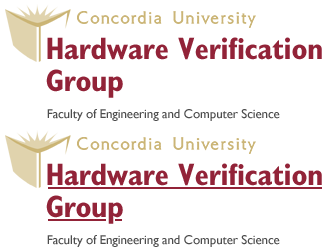Applications
A) System-Level ET Reliability Analysis:
1- IEEE 3-Bus Composite Bulk Power SystemThe standard IEEE 3-bus of generation and transmission bulk power network is consisting of three main transmission lines (M), two lateral transmission lines (L), two generators (G), three (two step-up and one step-down) substations, and three different industrial, commercial and residential loads A, B and C. We conducted the formal system-level ET reliability analysis of the bulk power system.

2- Quebec-New England HVDC coupling system between Canada and US
We conducted the formal system-level probabilistic risk assessment of the Quebec-New England HVDC Transmission system operated by Hydro-Quebec power utility in Canada. The location of the Quebec-New England Phase II HVDC project (2,690 MW) has five terminals in order from North to South: Radisson, Nicolet, Des Cantons, Comerford, and Sandy Pond.

3- IEEE 118-Bus Transmission Power Network
Consider the standard IEEE 118-bus of a complex transmission power network representing a portion of the American electric power system (in the Midwestern US) consisting of 19 Generators (G), 186 Transmission Lines (TL), and 91 loads. We conducted the formal system-level probabilistic risk assessment of multiple ET load models simultaneously and verify some significant reliability and energy indices for the power network.

B) Subsystem-Level CCD Reliability Analysis:
1- IEEE 39-Bus Distributed Generation NetworkThe standard IEEE 39-bus electrical power network is consisting of 10 generators (G), 12 substations (S/S), 39 Buses (Bus), and 34 transmission lines (TL). We used our CCD formalization in HOL4 to analyze all possible safety classes of reliability and failure consequence events that can occur in the electrical power network at the distributed generation subsystem level.

2- Interconnected Microgrid Renewable and Clean Power Grids
A smart power grid consists of four Interconnected Microgrid Renewable and Green (MRG) power grids incorporating 100% carbon-neutral green power plants, such as Wind Turbine (WT) and solar photo-voltaic (PV). We used our CCD formalization in HOL4 to analyze all possible safety classes of reliability and failure consequence events that can occur in the whole smart grid at each MRG subsystem level.

C) Subsystem-Level FBD Reliability Analysis:
1- Nuclear Power PlantIn this application, we used our FBD formalization in the HOL4 to analyze the probabilities of all possible safety classes of accident events that can occur in the nuclear reactor at the subsystem level.

D) FETMA Software System/Subsystem-Level Reliability Analysis:
1- Transmission Line Protection Circuit SchemeConsider a transmission line consists of 1 Distance Relay (R) and 1 Current Transformer (CT), 1 Potential Transformer (PT), 2 Trip Circuits (TC), and 2 Circuit Breakers (CB). Protective distance relays keep the utility grids and the equipment safe from faults and system unbalances by dividing the grid into zones. We used our proposed FETMA software to perform system-level ET reliability analysis of the transmission line protection scheme.

2- Smart Grid Automated Substation
Smart Automated Substations (SAS) of a smart power grid are constructed based on advanced monitoring infrastructure, control and protection devices, to operate as joint and multitask networks. We used our proposed FETMA software to analyze the probabilities of all possible classes of accident events that can occur in the SAS at each subsystem level (Process Level, Bay Level and Station Level).



